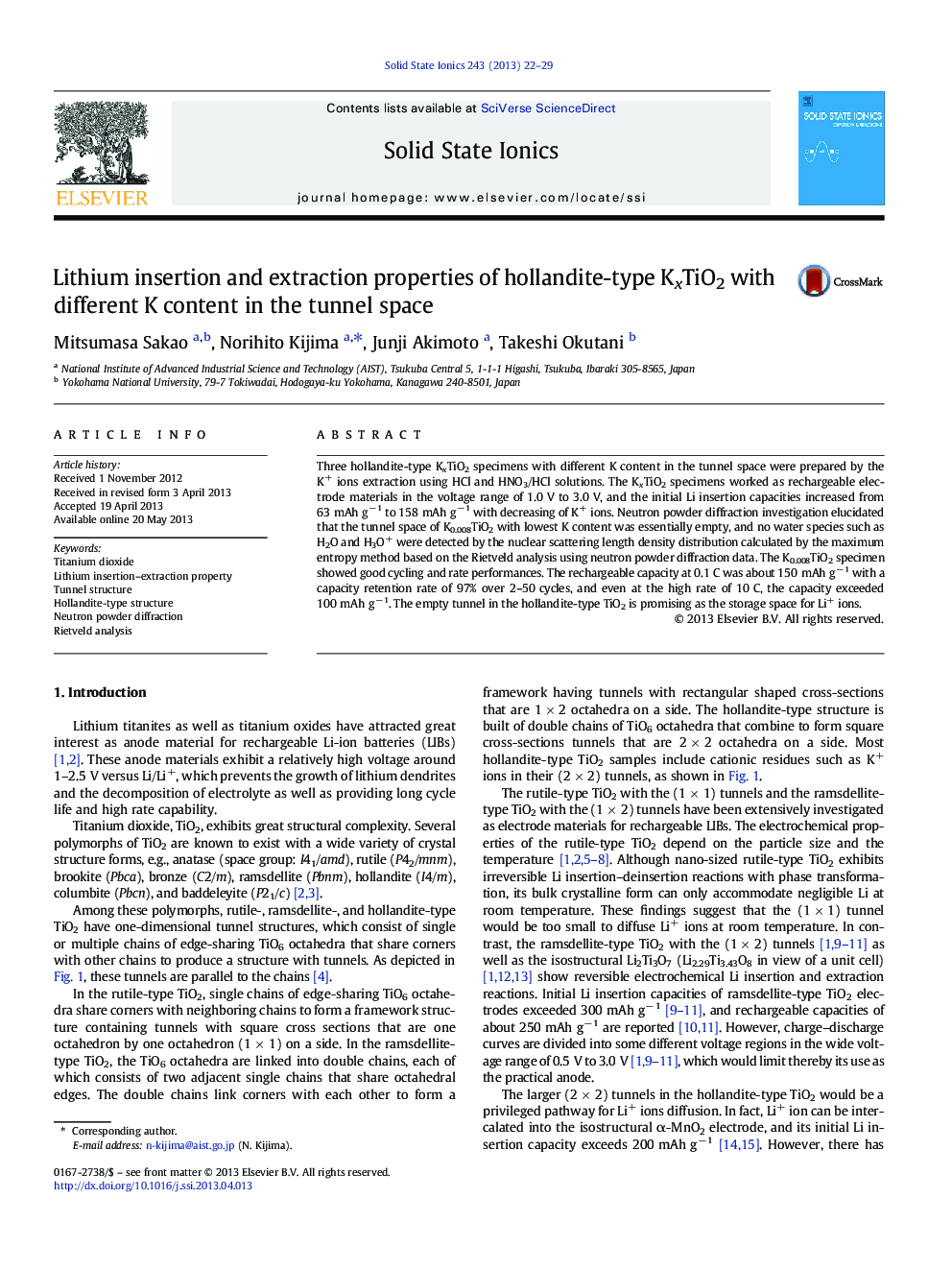| Article ID | Journal | Published Year | Pages | File Type |
|---|---|---|---|---|
| 1297988 | Solid State Ionics | 2013 | 8 Pages |
•Hollandite-type KxTiO2 with different K contents was synthesized by acid treatments.•Rechargeable capacities of hollandite-type KxTiO2 increased with decreasing of K.•Crystal structures of hollandite-type KxTiO2 were analyzed by neutron diffraction.•Hollandite-type TiO2 with empty tunnel showed good cycling and rate performances.
Three hollandite-type KxTiO2 specimens with different K content in the tunnel space were prepared by the K+ ions extraction using HCl and HNO3/HCl solutions. The KxTiO2 specimens worked as rechargeable electrode materials in the voltage range of 1.0 V to 3.0 V, and the initial Li insertion capacities increased from 63 mAh g− 1 to 158 mAh g− 1 with decreasing of K+ ions. Neutron powder diffraction investigation elucidated that the tunnel space of K0.008TiO2 with lowest K content was essentially empty, and no water species such as H2O and H3O+ were detected by the nuclear scattering length density distribution calculated by the maximum entropy method based on the Rietveld analysis using neutron powder diffraction data. The K0.008TiO2 specimen showed good cycling and rate performances. The rechargeable capacity at 0.1 C was about 150 mAh g− 1 with a capacity retention rate of 97% over 2–50 cycles, and even at the high rate of 10 C, the capacity exceeded 100 mAh g− 1. The empty tunnel in the hollandite-type TiO2 is promising as the storage space for Li+ ions.
